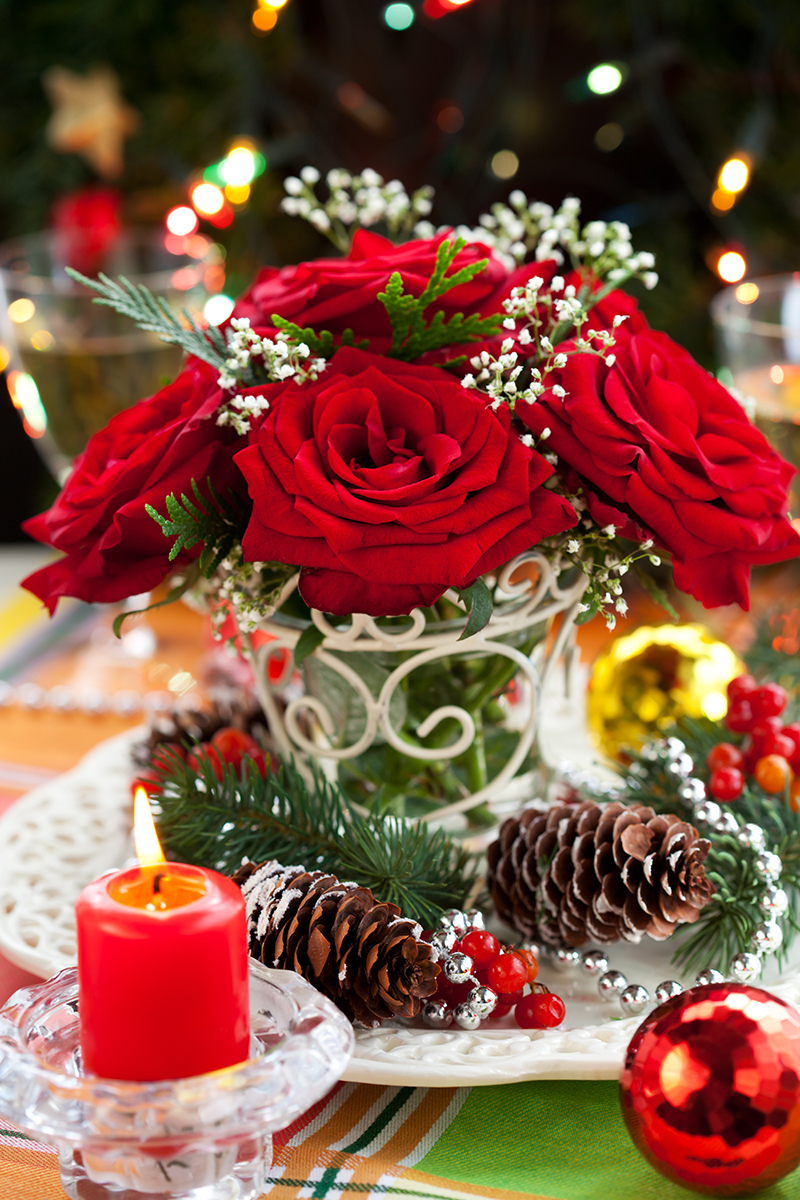Mastering the Art of Hydrangea Care
Posted on 27/05/2025

Mastering the Art of Hydrangea Care: Transform Your Garden with Flourishing Blooms
Hydrangeas are among the most beloved and versatile flowering shrubs, imparting elegance and color to gardens worldwide. Whether you're a novice gardener or an experienced horticulturist, mastering the art of hydrangea care is essential for cultivating spectacular, long-lasting blooms year after year. This comprehensive guide delves into every aspect of hydrangea care, from choosing the right variety to practical steps for cultivation, watering, pruning, and troubleshooting common issues.
- Why Grow Hydrangeas?
- Choosing the Perfect Hydrangea for Your Space
- Creating the Ideal Soil Conditions & Planting Tips
- Effective Watering Strategies for Hydrangeas
- Feeding and Fertilizing for Vibrant Hydrangea Blooms
- The Art of Pruning Hydrangeas
- Managing Pests & Diseases in Hydrangeas
- Troubleshooting Common Hydrangea Challenges
- Seasonal Hydrangea Care Checklist
- Showcasing Your Hydrangea Masterpiece
Why Grow Hydrangeas?
Hydrangeas make a stunning statement in any landscape. Their voluminous blooms, which can change colors based on soil chemistry, create a dynamic and everchanging garden display. In addition to their ornamental value, hydrangeas provide benefits such as:
- Long-lasting blooms from late spring through fall
- Excellent cut flowers for arrangements and bouquets
- Pollinator-friendly flowers that attract bees and butterflies
- Versatility: perfect for borders, containers, or focal points
Hydrangea Varieties and Their Unique Features
Selecting the right variety is crucial to mastering hydrangea culture. Understanding the characteristics of each type ensures you choose the best option for your region, taste, and style.
Choosing the Perfect Hydrangea for Your Space
To truly master hydrangea care, begin by matching the plant's requirements with your gardening site. Here are the most popular hydrangea species:
- Hydrangea macrophylla (Bigleaf Hydrangea): Known for its mophead and lacecap varieties, produces large, colorful flowers--often pink, blue, or purple. Bloom color can be shifted by adjusting soil pH.
- Hydrangea paniculata (Panicle Hydrangea): Boasting cone-shaped, creamy-white flowers that transition to pink, panicle hydrangeas tolerate more sun and colder zones.
- Hydrangea arborescens (Smooth Hydrangea): Famous for the 'Annabelle' variety, these have huge, snowball-like white blooms and are highly cold-hardy.
- Hydrangea quercifolia (Oakleaf Hydrangea): Unique oak-shaped leaves turn red in autumn, with white flower clusters, offering four-season interest.
- Hydrangea serrata (Mountain Hydrangea): More compact and cold-hardy, with delicate lacecap flowers ideal for small gardens or containers.
Tip: Before buying, check your USDA hardiness zone and note the sunlight exposure your site receives.
Creating the Ideal Soil Conditions & Planting Tips
The Secret to Vibrant Hydrangeas: Soil Preparation
Healthy hydrangeas begin with rich, well-draining soil. Slightly acidic soils (pH 5.5-6.5) are preferred by most hydrangea types, although some can tolerate neutral to alkaline conditions. Soil pH also impacts bloom color--especially for Bigleaf hydrangeas:
- Acidic soil (pH below 6): Flowers bloom blue or lavender-blue.
- Neutral to alkaline soil (pH 6 or above): Flowers bloom pink, purple-pink, or red.
Amend clay-based soils with organic matter and compost to improve quality and drainage.
Planting Hydrangeas: Step-by-Step
- Pick a site with morning sun and afternoon shade.
- Dig a hole twice as wide and as deep as the hydrangea's root ball.
- Mix in compost or well-rotted manure to the backfill soil.
- Set the plant in the hole, ensuring the root crown is level with the ground.
- Backfill, firm gently, and water thoroughly to settle the roots.
- Apply a 2-3 inch layer of mulch to retain moisture and suppress weeds.
Planting in early spring or fall helps roots establish before harsh weather.
Effective Watering Strategies for Hydrangeas
Proper hydration is essential for lush, vibrant hydrangea blooms. Both under- and over-watering can cause yellowing leaves, diminished flowers, and increased disease risk.
- Hydrangeas prefer consistently moist, well-drained soil.
- Water deeply 1-2 times per week, delivering one inch of water per session, especially during dry periods.
- Morning is the best time for watering, reducing the risk of fungal disease.
- Mulch helps retain soil moisture and maintain consistent soil temperature.
Tip: Use drip irrigation or a soaker hose for more efficient watering and to keep foliage dry.
Feeding and Fertilizing for Vibrant Hydrangea Blooms
Nourishing your plants is a vital part of comprehensive hydrangea care. Follow these feeding tips to keep your hydrangeas healthy and productive:
- Apply a balanced, slow-release fertilizer in early spring when new growth appears.
- Supplement midseason with a light, water-soluble feed (optional) for an extra bloom boost.
- Avoid over-fertilization as it can lead to lush leaves with fewer flowers.
- Bigleaf hydrangeas may benefit from fertilizers formulated for acid-loving plants, particularly if you want to encourage blue blooms.
Natural options include compost, well-rotted manure, fish emulsion, and seaweed extracts, which improve soil health and bloom quality.
The Art of Pruning Hydrangeas
Learning how and when to prune is crucial to mastering the art of hydrangea care. The correct approach depends on the hydrangea type and its blooming habits.
Pruning Guidelines by Variety:
-
Hydrangea macrophylla & serrata:
*Prune right after flowering ends.* These set buds for the next year immediately after blooming. -
Hydrangea paniculata & arborescens:
*Prune in late winter or very early spring* since they bloom on new wood. -
Hydrangea quercifolia:
*Minimal pruning needed.* Remove only dead or damaged wood in spring.
General Pruning Steps:
- Always use clean, sharp pruning shears.
- Remove spent flowers (deadheading) for a tidier look and sometimes a second, lighter bloom.
- Cut away dead, damaged, or diseased wood.
- Thin interior branches as needed to improve air flow.
Note: Avoid heavy pruning for Bigleaf and Oakleaf varieties, or you risk cutting off next year's flower buds.
Managing Pests & Diseases in Hydrangeas
With proper care, hydrangeas are relatively resilient, but they can occasionally face pest and disease issues:
- Aphids and spider mites: Remove with a strong jet of water or use insecticidal soap.
- Powdery mildew, leaf spot, and root rot: Prevent with proper spacing, watering at the base, and well-drained soil.
- Slugs and snails: Protect young growth with organic slug pellets or hand removal.
- Deer and rabbits: May browse foliage; consider fencing or repellents if wildlife browsing is a concern.
Integrated pest management (IPM) and organic gardening practices help keep your hydrangeas thriving naturally.
Troubleshooting Common Hydrangea Challenges
Even with perfect care, you may encounter issues. Here's how to identify and address common problems:
- Wilting or drooping leaves: Usually caused by underwatering, transplant shock, or excessive sun. Move to a shadier spot if necessary or water more consistently.
- Yellowing leaves: Often means overwatering, nutrient deficiency, or compacted soil. Check soil drainage, aerate, and apply a balanced fertilizer.
- No blooms: Improper pruning, late frosts damaging buds, or too much nitrogen can reduce flowers. Adjust pruning schedules and protect against late spring chills.
- Brown spots on leaves: May indicate fungal leaf spot. Improve air circulation and treat with fungicide if necessary.
- Browned flower clusters: Usually caused by direct sun, strong winds, or lack of water. Provide afternoon shade and monitor moisture.
Persistent problems can often be solved with adjustments to watering, feeding, or pruning practices.
Seasonal Hydrangea Care Checklist
Spring
- Prune as required, feed with organic or slow-release fertilizer.
- Apply fresh mulch to conserve moisture and suppress early weeds.
- Monitor for pests and fungal diseases as new growth appears.
Summer
- Water deeply during dry spells.
- Deadhead to promote additional blooms and a tidy appearance.
- Watch for wilting and signs of stress in prolonged heat.
Autumn
- Stop fertilizing by mid-fall to allow plants to harden off before winter.
- Leave spent blooms for winter interest or cut for indoor arrangements.
- Collect and save seeds if desired.
Winter
- Mulch deeply in cold climates to protect roots from freeze and thaw cycles.
- Protect tender varieties with burlap or frost cloth if severe cold is expected.
- Minimal, if any, pruning; leave stems standing until spring to shelter flower buds.
Showcasing Your Hydrangea Masterpiece
Part of mastering hydrangea care is celebrating your success! Here are creative ways to enjoy your hydrangea flowers:
- Cut blooms early in the morning and place in vases with fresh water.
- Dry flowers for long-lasting arrangements by hanging upside down in a cool, dark space.
- Share cuttings and rooted divisions with friends and neighbors--spread the beauty!
- Photograph your hydrangeas at different times of the year to track color changes and growth.
Final Thoughts: Grow with Confidence
Hydrangea care is both an art and a science, rewarding the attentive gardener with breathtaking displays year after year. By selecting the right variety, preparing soil well, nourishing thoughtfully, and pruning correctly, you'll unlock the full glory of these classic flowering shrubs. Implement the tips from this guide, and you'll truly be mastering the art of hydrangea care--turning your garden into a haven of color, elegance, and natural beauty.
Ready to cultivate your hydrangea skills? Start today and enjoy a garden awash with gorgeous hydrangea blooms for many seasons to come.

Latest Posts
The Tradition of Red Roses on Valentine's Day: A Symbol of Love
Top Blooms to Delight on a Birthday
The Symbolism Behind Peony Flowers and Their Colors
Explore the significance of birth month flowers and their meanings
Discover the Top 10 Effortless Office Plants to Brighten Your Workspace







